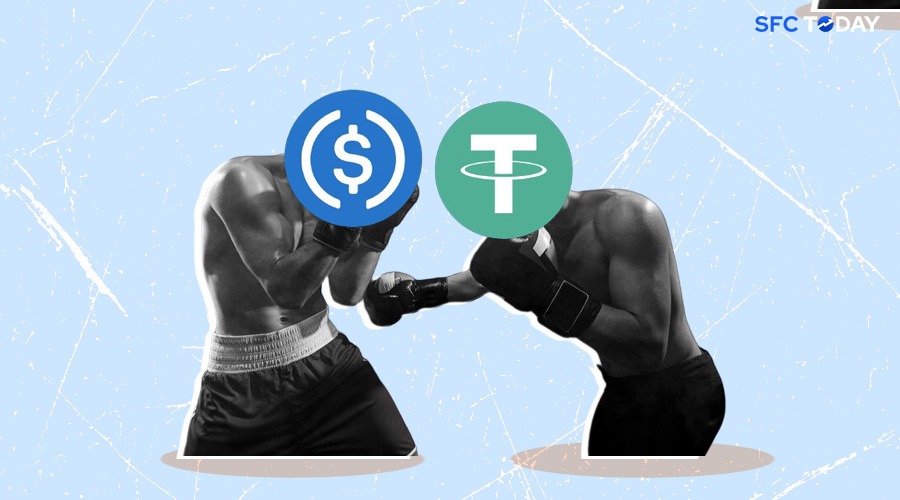Check out the comparative analysis of stablecoins USDT vs. USDC
Stablecoins have become a cornerstone in the world of cryptocurrencies, providing stability in an otherwise volatile market. Two of the most prominent stablecoins are Tether (USDT) and USD Coin (USDC). This detailed analysis will explore the differences, similarities, and unique attributes of USDT vs. USDC, helping investors and users understand which stablecoin might better suit their needs.
Overview of Stablecoins
Stablecoins are a type of cryptocurrency designed to maintain a stable value by pegging them to a reserve asset, such as the US dollar. This stability makes them an attractive option for investors looking to mitigate the risk of price fluctuations inherent in other cryptocurrencies like Bitcoin and Ethereum. Stablecoins are widely used for trading, lending, remittances, and as a store of value.
Tether (USDT)
Tether (USDT) was launched in 2014 by Tether Limited and is one of the oldest and most widely used stablecoins. USDT aims to maintain a 1:1 peg with the US dollar, meaning each USDT token is supposed to be backed by one US dollar held in reserve.
Market Position
USDT is the largest stablecoin by market capitalization and trading volume. Its widespread adoption across various cryptocurrency exchanges and platforms makes it a go-to stablecoin for traders and investors.
Mechanism and Reserves
Tether Limited claims that each USDT token is backed by reserves, which include traditional currency and cash equivalents, as well as other assets and receivables from loans made by Tether to third parties. However, Tether has faced scrutiny and controversy regarding the transparency and auditability of its reserves.
Use Cases
USDT is primarily used for:
Trading and Arbitrage: Due to its high liquidity, USDT is extensively used in trading pairs across exchanges.
Remittances: Its stability and widespread acceptance make it a preferred choice for cross-border transactions.
DeFi Applications: USDT is integrated into various decentralized finance (DeFi) platforms for lending, borrowing, and earning interest.
USD Coin (USDC)
USD Coin (USDC) was launched in 2018 by Circle, in collaboration with Coinbase, under the Centre Consortium. Like USDT, USDC aims to maintain a 1:1 peg with the US dollar.
Market Position
USDC has rapidly gained traction and is now the second-largest stablecoin by market capitalization. Its growth is attributed to its transparency and regulatory compliance.
Mechanism and Reserves
USDC is fully backed by US dollars held in reserve. Circle provides regular attestations from independent accounting firms to verify that the reserve assets are equal to or greater than the USDC in circulation. This commitment to transparency has bolstered confidence in USDC.
Use Cases
USDC is used for:
Trading and Arbitrage: With growing liquidity, USDC is increasingly used in trading pairs.
Remittances: Its transparent reserve mechanism makes it a trusted option for international money transfers.
DeFi Applications: USDC is widely integrated into DeFi platforms for various financial activities.
Payments: USDC’s transparency and regulatory backing make it attractive for businesses and institutions looking to accept cryptocurrency payments.
Comparative Analysis
Transparency and Trust
USDT: Despite its dominance, USDT has faced ongoing scrutiny regarding its reserve backing. While Tether Limited provides periodic attestations, critics argue that these are not as rigorous as full audits. This lack of transparency has raised concerns among users and regulators.
USDC: In contrast, USDC’s reserves are regularly audited by reputable accounting firms, providing a higher level of transparency. This commitment to regular and detailed reporting has earned USDC a reputation for reliability and trustworthiness.
Regulatory Compliance
USDT: Tether has had regulatory challenges and settlements, including with the New York Attorney General. These issues have led to increased regulatory scrutiny and have impacted its perception in the market.
USDC: USDC is designed with regulatory compliance in mind. Circle and Coinbase work closely with regulators to ensure adherence to financial laws and regulations, which has helped USDC gain favor among institutional investors and enterprises.
Liquidity and Adoption
USDT: Tether’s early entry into the market has given it a significant liquidity advantage. It is the most traded stablecoin, with extensive adoption across nearly all major cryptocurrency exchanges.
USDC: While USDC is catching up, it still lags behind USDT in terms of overall trading volume and liquidity. However, its adoption is growing rapidly, especially in the DeFi space and among institutional users.
Use in DeFi
USDT: USDT is widely used in DeFi applications, but its transparency issues have led some DeFi platforms to prefer other stablecoins.
USDC: USDC’s transparency and regulatory compliance make it a favored choice for DeFi applications. Many DeFi platforms and protocols prefer USDC due to the perceived lower risk associated with its backing and audits.
Stability and Peg
USDT: USDT generally maintains its peg to the US dollar but has occasionally experienced minor deviations during periods of high market volatility or uncertainty regarding its reserves.
USDC: USDC has shown a strong track record of maintaining its 1:1 peg to the US dollar, with minimal deviations. This stability is partly due to its transparent reserve management and regular audits.
Conclusion
Both USDT and USDC are key players in the world of cryptocurrency, providing a sense of security in a market that can be quite unpredictable. USDT’s broad availability and early access to the market position it as a leading contender, especially for investors looking for a high volume of transactions. Nonetheless, its lack of transparency and issues with regulation have sparked worries.
Conversely, USDC’s dedication to being open, following regulations, and undergoing regular checks has earned it a reputation as a reliable stablecoin, especially among big investors and in the decentralized finance (DeFi) area. Although it might not yet equal USDT in terms of trading activity and liquidity, its quick expansion and growing popularity indicate a bright future ahead.
In the end, deciding between USDT and USDC comes down to what the user values most. For those who value high trading activity and broad acceptance, USDT is still a top option. For those who prioritize openness, regulatory adherence, and reliability, USDC presents a strong alternative. As the stablecoin market continues to develop, both USDT and USDC are expected to play important roles in defining the future of digital finance.











